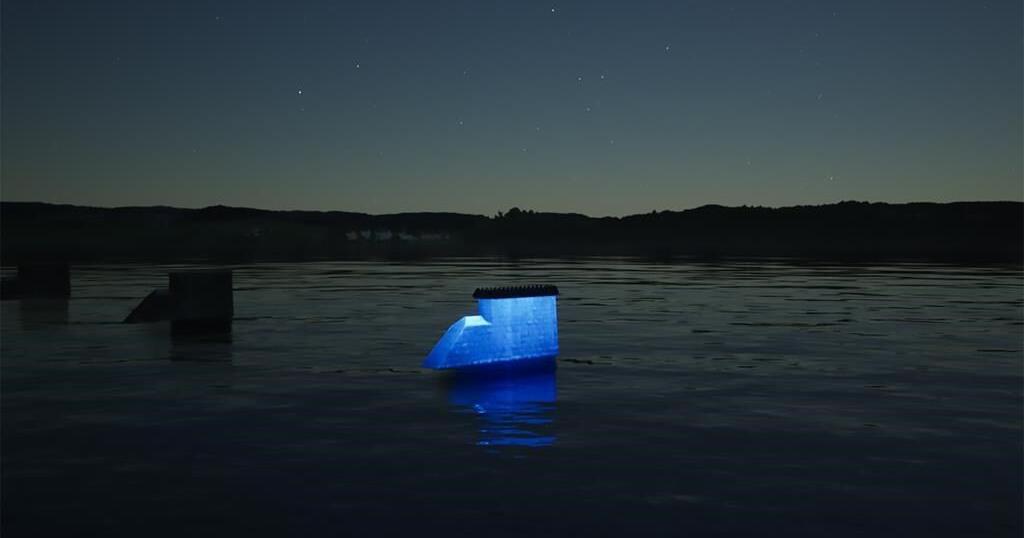FREDERICTON – Jackie McLean and her common-law partner Const. Robb Costello kept location-tracking services active on their phones so they could see where the other was. Often, when Costello was at the Fredericton police station, McLean’s phone would mistakenly tell her he was in the middle of the Saint John River, a few hundred metres away.
“I would take a screenshot of it and text it to him and say, ‘you’re in the middle of the river again,'” McLean said with a laugh.
McLean’s phone, however, has stopped tracking Costello’s movements. The officer was among four people shot and killed by a gunman hiding inside an apartment building on Fredericton’s north side in 2018.
But now McLean will be reminded of her late partner every time she walks or drives by the river, as the City of Fredericton plans to unveil a memorial dedicated to the mass shooting, which took the lives of Costello, Const. Sara Burns, and two civilians — Donald Adam Robichaud and Bobbie Lee Wright. The city says the memorial is also to honour “past and present first responders.”
“It’s kind of appropriate that this monument will be in the middle of the river,” McLean said.
Called “The Guardian,” the memorial will be installed on a pier of the old Carleton Street Bridge, whose span has been removed and whose piers remain in the water in a line crossing the Saint John River. Every evening at dusk, the pier will illuminate a gentle blue glow, which will grow stronger and be fully lit through the night, before dimming and turning off by dawn. The colour blue is often associated with police and other first responders.
Costello and Burns were killed around 7 a.m. on Friday, Aug. 10, 2018, while they were trying to help Robichaud and Wright, the two civilians shot and killed by a man who was firing from his window at the apartment complex.
The City of Fredericton says in a news release that the memorial will be visible to anyone walking along the trail loop on either side of the river’s north and south sides, and on the Westmorland and Bill Thorpe bridges.
McLean said she would have made been happier if the city had done something sooner; nonetheless, she said she is “very pleased” with what is being proposed to honour the two officers and two civilians. Fredericton says it plans to unveil the project by the end of next year.
“I can understand that it takes time to put this sort of stuff together.”
She said she was touched when Fredericton Police Chief Martin Gaudet gave her a presentation about the monument earlier this year. “I think it’s really beautiful,” she said.
“It’s more of a beacon that represents not just Robb and Sarah, but the civilian victims as well. It also represents our serving police officers, the people who keep our community safe right now.”
Her one criticism is that people won’t be able to see the lights during the day. She suggested the pier be painted blue so it also stands out when it’s not lit.
“I understand the symbolism behind it, and I understand the emotional impact of it, and I think it’s important,” McLean said.
In the six years since the shooting, it seems as though the community has started to forget about the sacrifice of the two officers, she said. “So for there to be a memorial … it means a lot to me. It recognizes their loss, their sacrifice, and the tragedy that affected our community.”
McLean said she spends time remembering Costello in her own way, and sometimes those memories are sad because she knows he’s not there to make new ones.
Until recently, she said she saw reminders of him around the city, like when she spotted his old patrol car — vehicle number 306 — a sight that she said wasn’t unpleasant because it told her his spirit was out there in the world and making an impact. The car has since been retired.
“So this monument will be sort of a continuation of that. I’m not going to see his car on the road anymore, but every time I see this monument, I will be reminded of him, and it’ll be in a happy way, and not necessarily in a sad remembrance.”
This report by The Canadian Press was first published Aug. 13, 2024.
